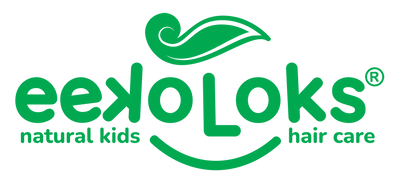Why You Should Avoid Artificial Colours in Children’s Products (& 5 of the Biggest Culprits!)

We all want what's best for our children, but with the paragraphs of ingredients on kids’ products in Australia, it's hard to know what that is. When it comes to artificial colours in children's products, don’t think twice—it's important to be informed so you can make the best choices for your family.
What are artificial colours?
Artificial colours are synthetic (man-made) dyes that are added to food, drinks, and beauty products to give them a more vibrant appearance.
Why Are Artificial Colours Used in Children’s Hair Products?
Artificial colours are used to add appeal to children's products - they make them look more attractive and enticing. Many manufacturers argue that these colours are safe, but there is growing evidence to suggest otherwise. Also, kids love colour! And making products colourful makes them more attractive to children. Unfortunately, this marketing strategy is particularly detrimental for our little ones and their health.
Common Side Effects of Artificial Colours & Toxins
Many of these colours have been linked to adverse health effects in children, including behavioural problems, hyperactivity, and attention deficit disorders. Several studies have since proven a strong correlation between artificial colours and negative mental health effects in children.
While ingesting them through foods continues to be the riskiest form of contact for your kids, any product that comes in contact with their skin can be just as harmful. The skin is incredibly efficient at absorption—which means no green hulk shampoo or pink sunscreen!
Back in 2009, the UK demanded that all food companies stop using artificial dyes in food products for kids. That was based off various studies which showed a direct link between synthetic dyes, hyperactivity, and cancer. Although many big companies no longer use artificial dyes in products sold in the UK, that is unfortunately not the case here in Australia.
Children are particularly vulnerable because their bodies haven't yet fully developed, making them more susceptible to the toxic effects of synthetic chemicals.
As tempting as it may be to get them the products with their favourite cartoon characters, these products are often formulated with a bunch of toxic compounds, artificial colours being one of the biggest culprits.
So why do companies continue to use these harmful chemicals in their products?
Artificial colours are much cheaper than natural alternatives, so manufacturers save money by using them instead. Unfortunately, this profitable production comes at the expense of our children's health, and studies have not been deemed conclusive enough to merit a complete ban on them in Australia.
5 of the Most Common Food Dyes & Toxins to Avoid
You should also check product labels carefully – if a product contains any of the following ingredients it likely contains synthetic dyes:
- Allura Red AC (FD&C Red 40)
- Sunset Yellow FCF (FD&C Yellow 6)
- Tartrazine (FD&C Yellow 5)
- Brilliant Blue FCF (FD&C Blue 1)
- Green S (FD&C Green 3)
Red #40 & Yellow #5 have been most closely linked with instances of ADHD!
Conclusion
If you're concerned about your child's exposure to artificial colours, avoid conventional toxic beauty products and processed foods as much as possible, and opt for fresh or organic options instead. Also, make sure to look out for these top 5 common food dyes, and try to stay away from them as much as possible. One day, your kids will thank you!

